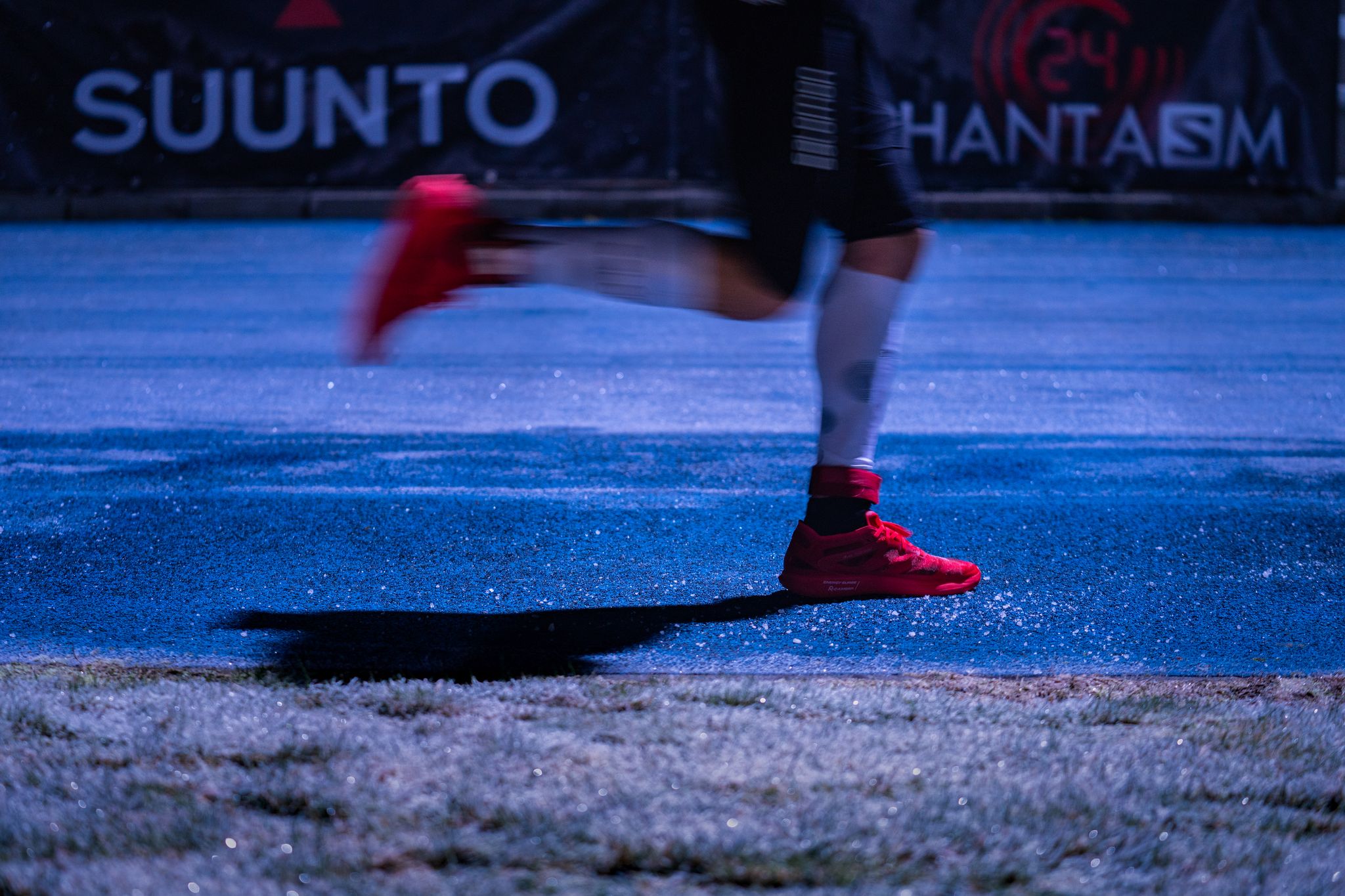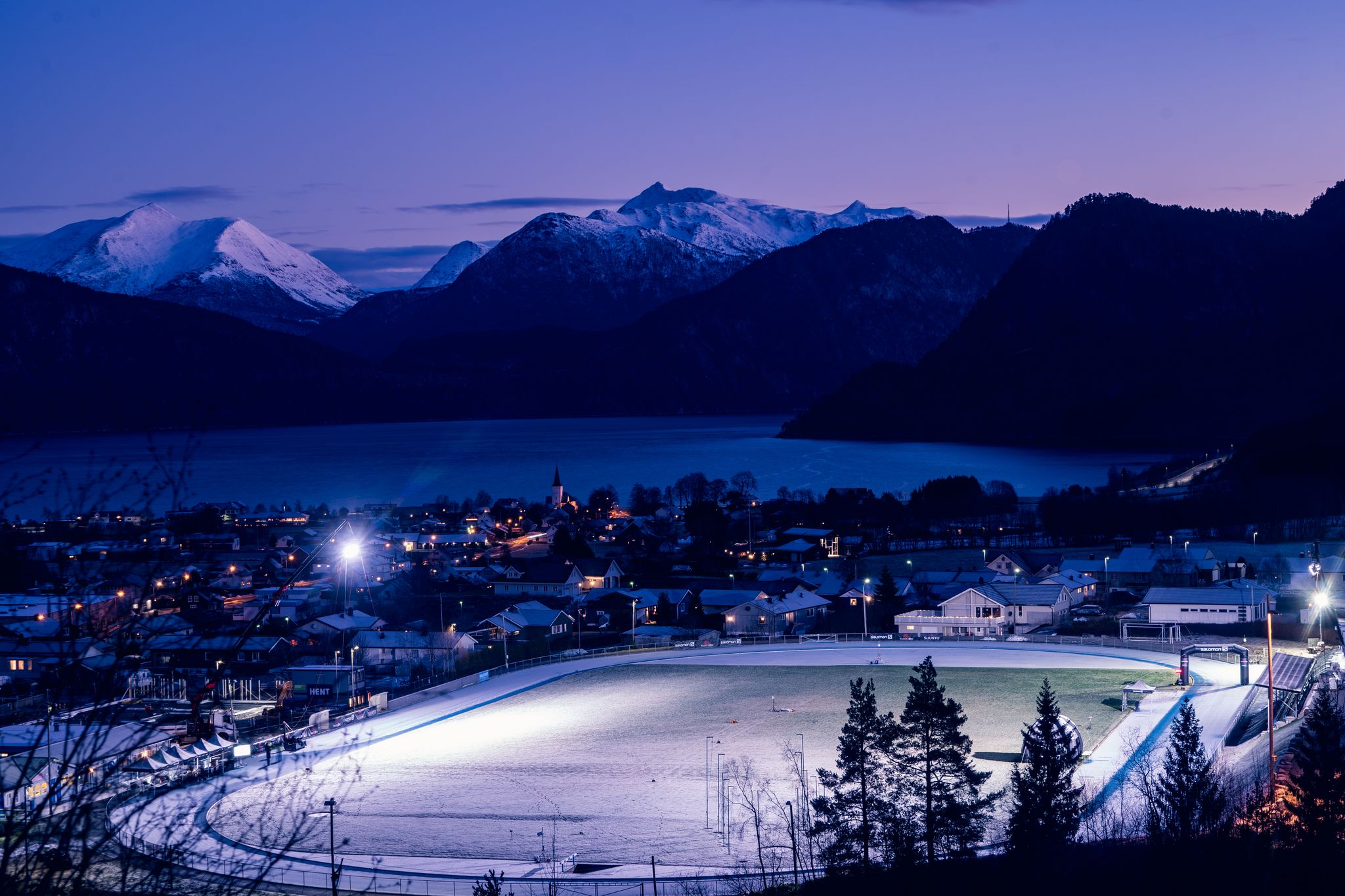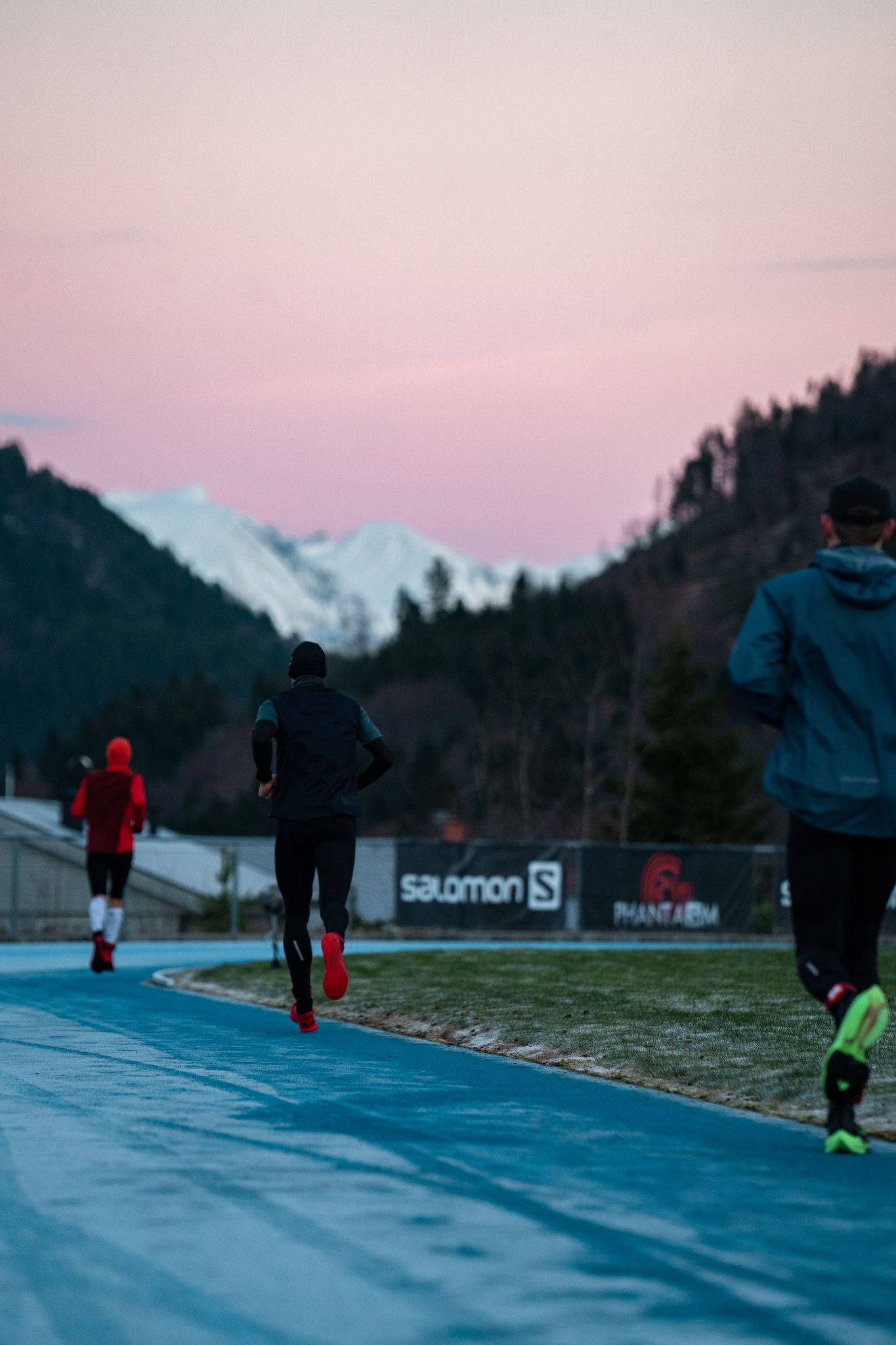Phantasm 24h run. What I’ve learn

Sport is above all accepting the uncertain. The last few years, this exploration and stepping out of my comfort zone has been my main motivation, taking a challenge where the possibility of failure is big, but where I will certainly learn more than staying where I am familiar. Climbing high altitude summits, running on surfaces I’ve never run before are motivating because I need to rethink all my preparation, strategies and training. And it is in this preparation where most of the learning happens. Of course, the final result is proof that this preparation was in the right direction and for inner satisfaction it is great to make great performances, but the result shouldn’t take away all what we’ve learned.
At the beginning of this year I made a plan of what I wanted to do, the plan was an expedition that got cancelled due to the covid situation, and after that to train and run different distances on the flat, up to a 24h race. I talked with Salomon and suunto to see if they wanted to be part of the project and they were excited to help. Last weekend the Phantasm 24h was on and I DNF (even if I don’t know if you can say DNF on a time race, but anyway I pulled out after 134.8km)
I’m disappointed with how it ended. It’s many things that we cannot control during a race, but it’s these unexpected things that make sports great. Despite the bad outcome of the race, the preparation process has been very interesting, and I’ve been learning a lot for future races and projects.
Preparation:
Preparation has been good but not great. Transition from a surface to another requires some time, and I didn’t take that time to adapt the muscles. At the beginning I wanted to keep my numbers of mountain training on the flat, meaning the same amount of hours of training, weeks of 25-30h. When running in mountains a long day can be a 6-8h run and a recovery day 2-3h, because the joint impact is lower, but when training on roads, a long day can be a 3h run and a short run 1h. That took me some time to understand, because I was feeling that I wasn’t training at all so I was just filling the weeks with more intensity days to feel that I was training. This led to injuries, first on the hip and then on the tibials. Coming from other endurance sports like skimo or trail and going to flat we don’t need to train the cardio but instead focus on leg strength and pace, reducing a lot the training volume.

It is 2 different preparations/efforts when it comes to a long run:
First, the metabolism, if the engine is ready to store, absorb and convert energy, to deliver a X amount of power during 24h. I wasn’t very worried about this one since it is what I often do in long trails or mountaineering, with the plus that here I would have access to fuel and hydration when I want so the metabolism will be suffering less. At a speed of 4’/km I was testing that I had a lactate of 1,4-1,7mmol/l so very similar to low intensity efforts during long trails and climbs, so in terms of metabolism it wasn’t a lot of preparation to do. But anyway this summer I wanted to do some long days in the mountains and the Hurrungane 2000’s was a perfect reminder to the metabolic effort ( https://www.strava.com/activities/3809989425 )
Secondly, the muscular adaptations. When running, especially on a flat and even surface the movement is almost exactly the same, muscles fibers are doing a constant repetition of extension length, contraction type and muscles and joints are having a regular impact at the exact places, this will give sore muscles after a few hours. To keep a “fresh” stride during hours is important to make muscular adaptations so this soreness arrives further. To increase running volume (distance) during training and strength training are two of the most efficient ways to do that. This year, when the spring expedition got cancelled I started running earlier than usual, not much but doing around 100km/week as a complimentary training from the ski. Then, by end of April, I stopped skiing and started to train uniquely by running with a good weekly mileage (180-200km) and adding more and more speed sessions. As I said before, doing that I felt I wasn’t training much, because it wasn’t many hours per week compared to normal mountain training, and so I just added more speed work (up to 4-5 sessions per week), which was working very well for a few weeks but it resulted as a strong hip injury at the end of May. Unable to run on flat, I was cycling and doing a lot of hours of mountain/scrambling running and skiing. The injury was gone by early August, and then I had some very good weeks of training where I was very fit both in uphill and on the flat. But after 8 weeks I got a tibial injury. I thought it would go away so I decided to do a 10k race anyway but during the race I saw it wasn’t the best decision for my injury so after that I couldn't run for 2 more weeks. When the injury disappeared I could do 4 weeks of good training before the race. So I had some great periods of training (april-may / august-september) but lots of ups and downs making running training not so consistent. I had some periods with several weeks over 200km and a few specific runs (6h on the track, and several 50k on road or track) and I think muscularly I was ready but I cannot be sure since I couldn't enter the distance where legs start to really hurt.
In a perfect preparation I would like to be more consistent in weekly distance, maybe doing less speed work to focus only on distance to avoid injuries related to speed, some more strength training, and to have a 12h test instead of a 6h test a month or so before.
Nutrition and gear:
I’ve been working with Aitor Viribay to make nutrition training and a fueling plan for the race. I’m someone who doesn’t eat a lot, and with him I have been preparing to eat a lot during training, which built a tolerance to eat up to 100ch/h easily during the race.
During several weeks I did some specific training sessions eating a lot to build these adaptations and it worked very well.
For the race we made a plan based on eating around 100-120ch /h of gels (Maurten gel) and drink (maurten drink mix), with some salt to change flavour and to avoid peeing too much. I’m super happy with how that went. With cold temperatures we could even concentrate more the drink mix to enter the carbs with less fluid and the response was very positive. I believe that this nutrition plan and training was one of the best things I learned during this preparation!

Another important subject when it comes to long distance runs are the comfortability and adaptation to the gear we will use. This year after all the injuries I was a bit afraid of muscle impact and shoes comfort is important there too. In mountain we often use very hard shoes to be able to feel the terrain and be very precise on where we put our feet, in roads, because your safety is not affected if you place the feet some millimeters right or left, and also because in the mountains the surface tends to be softer than the asphalt or track, you can use softer materials. I’ve been working with salomon for many years developing mountain and trail gear and we also collaborate on the development of the phantasm shoe. Since last year with some designers, specially Felix Dejey, we tested some prototypes to develop what became the Phantasm. I had tested the shoe during my long runs and I was very confident about the comfort of not having any blisters and also the softness of the midsole.
Race day:
The race was scheduled for November 20th, but just that day a snow storm reached western Norway, covering the track with 30cm of snow. The race was postponed to the week after waiting for warmer temperatures and no precipitation. With an uncertain forecast the decision of the final date was made at the last minute. I want to congratulate and thank the organizers, the Måndalen Idrettslag, Salomon and Lymbus who made a great event despite the weather conditions and the global covid situation.
Conditions were not ideal, and it wasn’t a surprise being end of november in Norway, but we decide it to make it in Måndalen for several reasons. First, environmental, to travel very far to find a track identical to one I have at 4km from home seems not reasonable for me, not being a track specialist and taking this as a test of what I could run in 24h and not as part of a main discipline of my career. Secondly, Covid situation and race cancellations all over, it seemed great to have a race with few participants in Norway where it was possible. (we were 6 participants, the maximum allowed, and it was some in the waitlist!), and finally because I also believe that running is not only about runners but about all the people around the event, organizers, volunteers, etc. And since Måndalen IL is my club it was great to show what a beautiful location we have for a stadium :)

Back to the race day. The weather wasn’t perfect, temperatures around 0ºC /-2ºC (but clear sky) made it important to run covered with long clothes and a down jacket and mittens at some moments. (I was running with a NSO tight down to the knee and NSO calves, and a NSO long sleeve and a softshell jacket, and putting on and off mittens - thin gloves and a light down jacket and was perfect to keep a good temperature.) The organizers did a great job keeping the track from freezing by putting down salt and with the right clothes, the temperature was great for breathing and for not having dehydration.
We started running at 11 and from the start Sebastian Conrad Håkansson and I ran together at the planned pace. After 4h we changed direction and I had some pace mistakes ( I thought we were running a bit faster so I slowed down until I saw the mistake and start running a bit faster again). At around 9h or so I started to feel tired. I thought it was one of the normal ups and downs of distance running or the cold temperatures. I put on a down jacket and after some time I started to accelerate. Some minutes after 10h I felt 2 consecutive painful chest oppressions that made me slow my body down to stop the pain and then I felt very dizzy. The first medical tests were very encouraging and did suggest that the problem didn’t come from the race effort but I will do more in-depth evaluations in the next few days.
And if the race ended up for me in the Hospital, Sebastian run 100 miles in a great pace breaking the norwegian records of 100km, 12h and 100 miles before stopping. Harald Bjerke completed 232.28km, Jo Inge Norum 219.45, Simen Holvik 208.13 and Didrik Hermansen 174.8km. Huge kudos to them!
RESULTS: https://racetracker.no/events/2020/moon-valley-24h/?lang=en
STRAVA: https://www.strava.com/activities/4405472784
So to conclude, I think all I’ve learned about training, nutrition and pacing / logistics during the race will help me, or some other runners to succeed in running a 24h or long flat running again in the future.

Pictures by Håvard Dalen